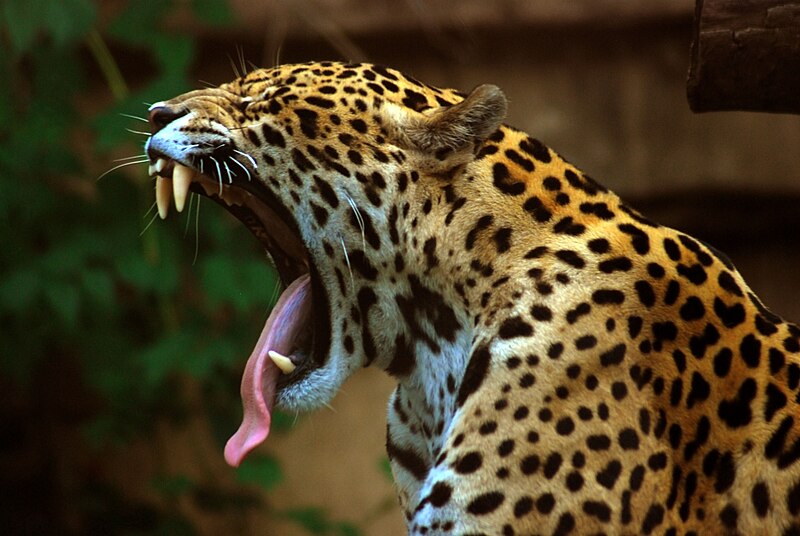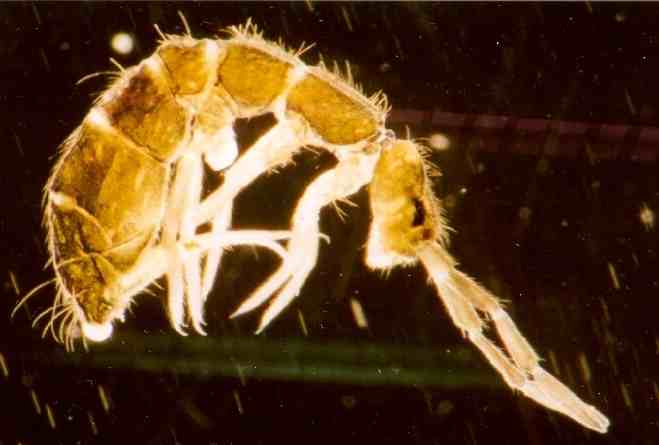Wildlife rehabilitators are private citizens who care for injured, sick or orphaned animals and, whenever possible, return them to their natural habitats (un-releasable animals may sometimes be retained for educational purposes). Such work has traditionally focused on birds and mammals, but these days a growing number of caring people are focusing their efforts on turtles, frogs, snakes, alligators and other herps. Read More »
Breaking Animal News and Observations Now Posted Daily on Twitter
 I’m pleased to say that I’m now posting several notes (“Tweets”) on Twitter each day, 7 days a week. I’ve worked with everything from ants to elephants, and so much interesting info comes my way – a lot of it through other zoologists and my own activities. Twitter will make it easy to share this as well as breaking nature news and discoveries as they happen. Things I’ve noticed in my collection or as I’m wandering about in the field, newly discovered species, interesting tidbits passed on by others, my take on some of the day’s news items…anything and everything animal-related will be mixed in. Read More »
I’m pleased to say that I’m now posting several notes (“Tweets”) on Twitter each day, 7 days a week. I’ve worked with everything from ants to elephants, and so much interesting info comes my way – a lot of it through other zoologists and my own activities. Twitter will make it easy to share this as well as breaking nature news and discoveries as they happen. Things I’ve noticed in my collection or as I’m wandering about in the field, newly discovered species, interesting tidbits passed on by others, my take on some of the day’s news items…anything and everything animal-related will be mixed in. Read More »
Raising Springtails as Food for Poison Frogs, Mantellas and other Small Amphibians – Part 2
 Springtails are minute, primitive, wingless insects classified in the Order Collembola. Over 6,000 species are found in most temperate and tropical habitats, where they figure importantly in the diets of Poison Frogs (Dendrobates, Phyllobates, Oophaga), small salamanders and newly metamorphosed amphibians of many kinds. Please see Part I of this article for information on procuring Springtails and their role in helping to save the nearly extinct Kihansi Spray Toad (Nectophrynoides asperginis). Read More »
Springtails are minute, primitive, wingless insects classified in the Order Collembola. Over 6,000 species are found in most temperate and tropical habitats, where they figure importantly in the diets of Poison Frogs (Dendrobates, Phyllobates, Oophaga), small salamanders and newly metamorphosed amphibians of many kinds. Please see Part I of this article for information on procuring Springtails and their role in helping to save the nearly extinct Kihansi Spray Toad (Nectophrynoides asperginis). Read More »
Gas Bubble Disease in Aquatic Frogs, Newts and Salamanders
 I’m frequently contacted by amphibian keepers who find that their pets are floating about at the water’s surface and seem unable to submerge. While gas produced by bacteria within the animal can cause this, the most frequent culprit is Gas Bubble Disease. This term is sometimes used to refer to any of several related but different maladies, and commonly afflicts African Clawed Frogs (Xenopus laevis), Dwarf Clawed Frogs (Hymenochirus spp.) and Mexican Axolotls (Ambystoma mexicanum). Read More »
I’m frequently contacted by amphibian keepers who find that their pets are floating about at the water’s surface and seem unable to submerge. While gas produced by bacteria within the animal can cause this, the most frequent culprit is Gas Bubble Disease. This term is sometimes used to refer to any of several related but different maladies, and commonly afflicts African Clawed Frogs (Xenopus laevis), Dwarf Clawed Frogs (Hymenochirus spp.) and Mexican Axolotls (Ambystoma mexicanum). Read More »
Slider and other Semi-Aquatic Turtle Diets – Vegetables and Greens – Part 1
 Some of the most popular semi-aquatic (or “basking”) pet turtles, such as Red-Eared and Yellow-Bellied Sliders, Map Turtles, Cooters and Chicken Turtles, eagerly accept fish and other animal-based foods – so eagerly, in fact, that it is easy to forget that most are omnivorous, and not carnivorous, by nature.
Some of the most popular semi-aquatic (or “basking”) pet turtles, such as Red-Eared and Yellow-Bellied Sliders, Map Turtles, Cooters and Chicken Turtles, eagerly accept fish and other animal-based foods – so eagerly, in fact, that it is easy to forget that most are omnivorous, and not carnivorous, by nature.
Natural Dietary Shifts
In the wild, the world’s most popular pet turtle, the Red-Eared Slider, starts life as a meat-eater but consumes ever more aquatic plants as it matures. By adulthood, vegetation forms the bulk of the diet, although this varies a bit among populations (Red-Eared Sliders are, after all, the most adaptable of all turtles, with introduced populations thriving on every continent save Antarctica!). The same applies to the various Painted Turtles (Eastern, Midland, Southern, Western), the Chicken Turtle and the Cooters – as they mature, over 90% of the diet may be comprised of plants.
Map Turtles vary by species and population as regards their diet – most consume more plants as they mature, but tend to remain largely carnivorous. Some Map Turtles exhibit unique strategies. For example, female Barbour’s Map Turtles (Graptemys barbouri) are specialized predators of crayfishes, clams and snails, while the much smaller males take insects, carrion and plants.
Captive Diets
Many commercial Aquatic Turtle Diets provide excellent nutrition and can serve as a dietary mainstay, and there is some evidence that diet of Reptomin and Freeze Dried Krill meets all the nutritional needs of several species.
However, I’ve always found it preferable to include a good amount of whole, natural foods in turtle diets, especially where less well-studied species are concerned. The shift from animal-based to plant-based foods is a very definite phenomenon in nature, and may very well hold the key to captive longevity and reproduction for some types of turtles.
Further Reading
An interesting study of the diets of wild Red-Eared Sliders and River Cooters is posted here.
Even baby Sliders will take greens, as this YouTube video shows.
Southern Painted Turtle image referenced from wikipedia and originally posted by Aka
 That Reptile Blog – Reptile, Amphibian and Exotic Pet Care and Information
That Reptile Blog – Reptile, Amphibian and Exotic Pet Care and Information
